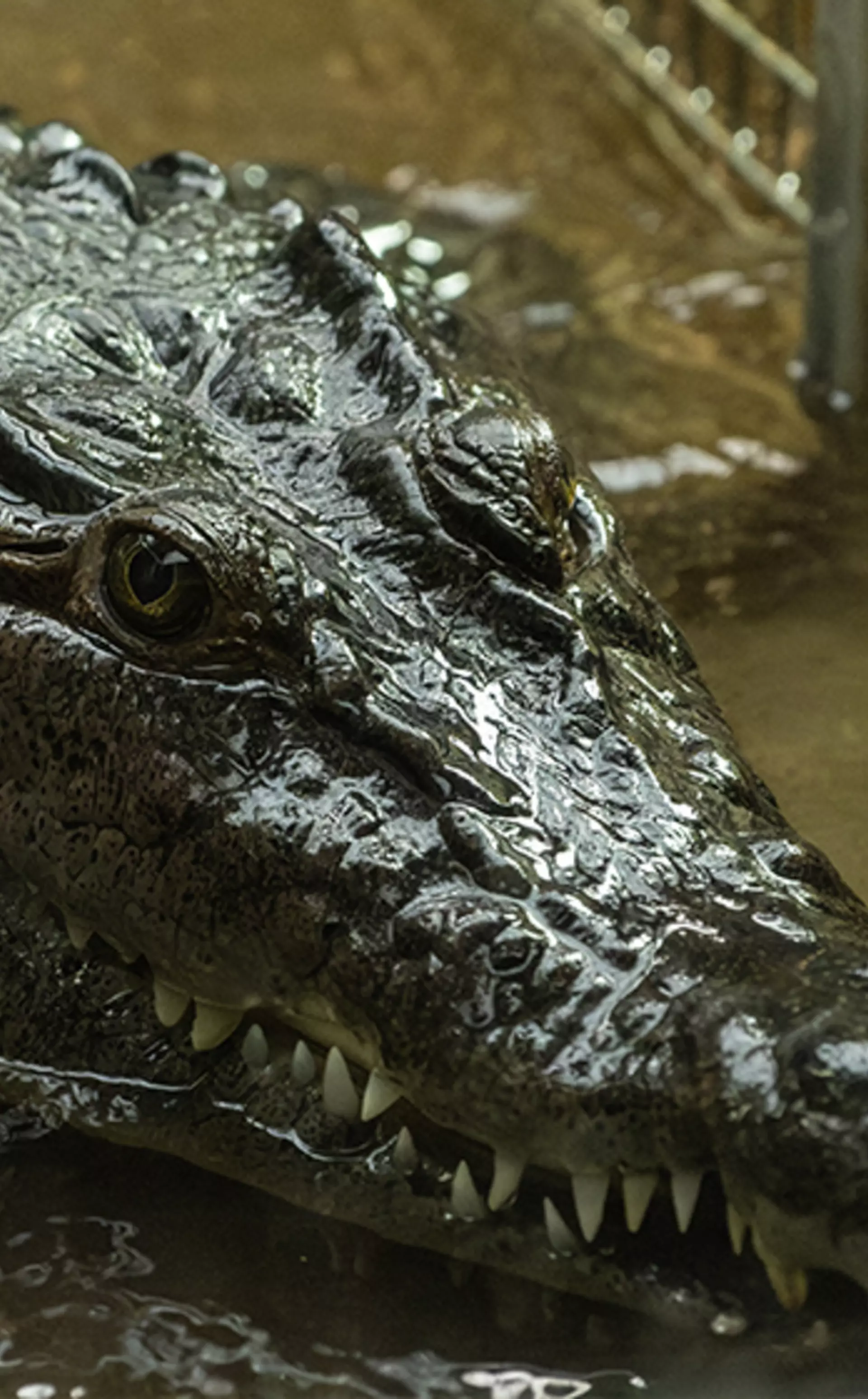Our conservation zoo is abuzz with anticipation as we prepare to unveil our brand-new Secret Life of Reptiles and Amphibians experience, this Easter. Among the myriad of captivating creatures making their way to this state-of-the-art facility is the Philippine crocodile, a remarkable species.
As this majestic reptile prepares to embark on a new chapter in his life, join us on his journey from the historic Reptile House at London Zoo, to new digs over at the forthcoming Secret Life of Reptiles and Amphibians.
Expert care during animal relocation
Transitioning to a new environment can sometimes be a daunting prospect for any of our thousands of animals, but our Philippine crocodile is primed to adapt and thrive in his new home. London Zoo's dedicated team of reptile experts spared no effort in ensuring a smooth transition for this remarkable species. Travelling via a heated vehicle, after a period of meticulous behavioural training to encourage the croc to enter the crate for his journey, he was carefully transported from the old reptile house to his new abode, with his comfort and well-being being prioritised throughout the move.
As our croc settles into his new surroundings, ongoing adaptations are being made to the exhibit to tailor for his specific needs. These atmospheric conditions have all been carefully adjusted using data taken from the species’ native habitat in the Philippines, having been tested for many weeks in advance. From temperature regulation to lighting, habitat adjustments and enrichment activities, every aspect of its new home is meticulously crafted to promote the crocodile's physical and mental well-being.
Early visitors to Secret Life of Reptiles and Amphibians may notice some additional sheltered areas that have been created for our crocodile, giving him some extra privacy as he gets to know his new home.
Philippine crocodiles on the EDGE
As visitors eagerly await the grand opening of Secret Life of Reptiles and Amphibians, they can look forward to discovering a treasure trove of fascinating facts about the Philippine crocodile. The Philippine crocodile is an EDGE species (evolutionarily distinct but also globally endangered), highlighting its unique evolutionary history and the urgent need for conservation action.
The unveiling of our new reptile and amphibian house is not just a momentous occasion; it's an invitation to embark on a journey of discovery and wonder. By purchasing tickets, you will not only gain access to an immersive experience but also contribute to the vital and ongoing conservation efforts to protect threatened species like the Philippine crocodile.
Gold members, Fellows and Patrons will have the opportunity to book a free preview slot to see the habitat before it opens to the public on selected sessions between 16-24 March:
The grand opening of Secret Life of Reptiles and Amphibians promises to be a celebration of nature's wonders, and the Philippine crocodile stands as a testament to the enduring power of the animal kingdom. Come join us on an exhilarating wildlife adventure, and witness firsthand the beauty and resilience of ‘the freshwater king’.
